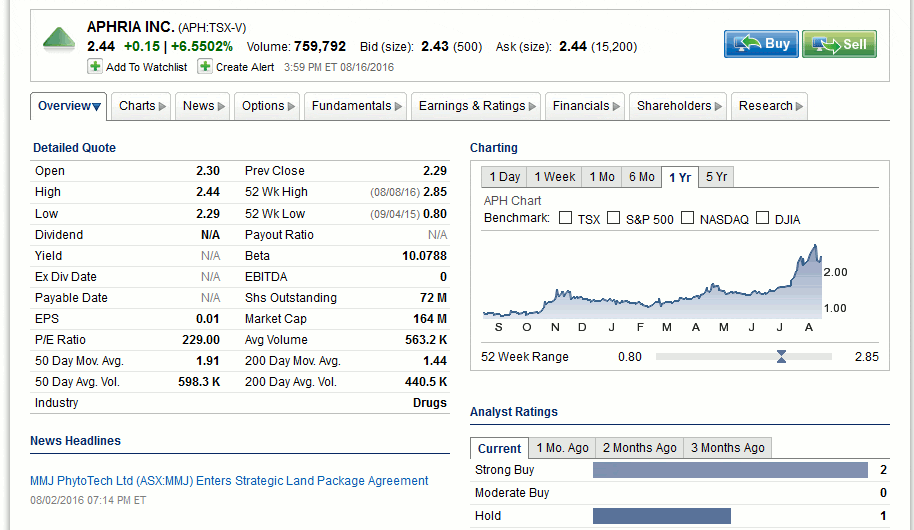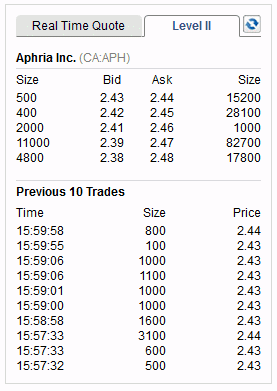Last week we debuted the first Investing Is Awesome column on Vancouver news and events outlet, VancouverIsAwesome, and the response was amazing.
The column is intended to help millennials explore investing in local companies, rather than blowing their money on consumer goods and online poker, and it went down a treat. Traffic back to Equity.Guru tripled our usual readership, and that traffic kept coming all week.
But one theme rang true for a lot of potential investors who contacted me about the series opener, and that was, “I want to invest, I’m down with what you’re saying, but how do I actually do that?”
If you already know how to buy stocks and have your trading platform all set to go, the rest of this article isn’t for you.
For everyone else, let’s give you the skinny on how to buy your first shares in a public company:
HOW TO BECOME A STOCK MARKET INVESTOR
1. GET A TRADING ACCOUNT:
This is actually harder than you might think. Every business in the world tries to make it easy to get new customers, except the financial sector, where between regulators and compliance officers and bank clerks who assume you’re a money launderer until you provide a picture of you and Mother Theresa building a shanty for lepers, it can be like pulling teeth getting established.
So let’s make it easy as we can. Here’s what you need:
- ID
- A bank account
- $1000
Okay, it doesn’t seem that hard. Pretty much every bank and credit union out there has a trading platform, or one that they’ve partnered with. The bank staff will happily help you set up an account, and that’s a good thing because the process is dumb, paperwork heavy, and assumes you know what all the fine print and finance boffin terminology means – and even I don’t know what they’re talking about half the time.
If you want to set up your own trading account, that’s not a bad thing, because there are definite differences between them, both in ease of use and pricing.
Look for a low ‘pay per transaction’ account, something under $10 per trade ideally, rather than a monthly fee. The big banks will give you that but want you to have $50k in your account first. Also, they can go to hell.
Interactive Brokers has the lowest per trade commission, but want you to have a minimum of $10k in your account. If you’re under 21, they’ll cut you some slack on that and go for as little as $3k.
I use Qtrade, through Coast Capital, and I’ve been happy with them. They charge $19 per trade, but if you do 30 trades in a quarter (basically averaging two a week, which isn’t a lot), that comes down to $10 per trade. If you crack 150 per quarter, it drops to $7.
Something to consider – if you’re only buying $100 of shares in something, that commission (one for the purchase and one for the sell) really eats into any profit you’re going to make, so at a low level, it’s best to think about long term trades rather than daytrading, and even breaking the old theory that you shouldn’t put all your eggs into one basket.
If I was starting with $1000 today, I’d be looking for maybe two companies to split that between at the max.
2. BUY SOME STOCKS:
Once you have your trading account, buying is fairly easy, but you do need to know a few things. I’ll use my Qtrade account as a guide, as every trading platform differs.
First, you need to know the ticker symbol of the company you want to buy. Let’s assume you’re coming to this from a column like mine, where I’ve said, “I think Aphria (APH.V) is a great weed investment opportunity,” and you’ve said, “By george, I think you’re right!”
That APH.V is called a ticker symbol. That’s how the exchange identifies the company you want to invest in.
So, in Qtrade, on the front page, there’s a wee search box over that lets you enter a ticker symbol or company name and takes you to this:
So let’s help you understand what you’re looking at here. Aphria is on the Toronto Venture Exchange (hence the ‘.V’ in the ticker). The Venture is where the higher risk, higher reward companies go. Back in the day, it was known as The Vancouver Stock Exchange.
The TSX proper is where the big established ‘you know they’ll be here next year’ companies live. The Venture is where the ‘we have a plan and we’re really hoping it works’ companies live.
In the US, you have a similar set up; The NY Stock Exchange and the NASDAQ are the big boys, and the Venture equivalent is the OTC (Over The Counter).
Beyond that sit the ‘Pink Sheets,’ where you’re basically dealing in ‘wild west, Wolf of Wall Street, every man for himself, where did my money go, now I’m selling crack for a living’ stuff. Don’t touch the pinks. They’re like playing roulette and putting it all on green.
But the Venture companies we like. They have to put out audited financials and aren’t allowed to make wild promises and they’re good Canadian kids that, if they do well, bring significant returns so, for me, that’s the sweet spot.
For a brief (and vintage) primer on how the market works, enjoy this piece of history:
Up top of the picture above you’ll see that Aphria shares cost $2. 44, and that they’ve gone up $0.15 today (+0.15). On a percentage basis, that means its up 6.55502%.
That’s good. But there are also a couple of terms tossed around up there that you should know:
‘Volume’ means how many shares have been bought and sold today for that stock. If the price is moving hard and there’s a lot of volume, that means the consensus on that stock is changing. If the volume is low and the stock is moving hard, that means there’s a shortage of stock available, so people are paying more (or less) than they usually would.
The ‘bid’ is how much people are currently prepared to pay for the stock.
The ‘ask’ is how much people are willing to sell it for. In this case, you can either pay $2.44 to buy the stock right now (known as a ‘market’ buy, as in you’ll pay what the market is asking), or you can set a lower price and wait to see if anyone will agree to that price through the day (known as a ‘limit’ buy, as in you’re limiting any deal to a price you’ve set and if you don’t get that price, no deal).
There’s a lot of other stuff there that you should study up on going forward, but the two phrases that are most important, in my opinion, are ‘shares outstanding’ and ‘market cap’.
The ‘shares outstanding’ are how many shares exist for the company. This is important because, a 1c stock with a billion shares on the market is essentially the same as a $1 stock with 10 million shares, because their valuation ($1 x 10 million = $10 million, and $0.01 x 10 billion = $10 million) is exactly the same.
That valuation is known as the ‘market cap’. Aphria’s market cap is $164 million, which is a lot for a company in the Canadian weed space. While the company is rock solid, you have to think to yourself whether or not you feel there’s any room to grow and, more importantly, whether you feel others will want to buy it going forward.
Let’s say you think it’s a steal (I agree) and decide to hit that ‘buy’ button.
Good for you! We’re doing this!
So the next screen shows up and now you’re cooking.
In this scenario, we’ve decided to buy 500 shares in Aphria (which will cost $1220). We’ve set it to ‘market’ because, heck, just buy it already.
If you set it to ‘limit’, you’ll be asked what your purchase price is. Maybe you think the stock is dropping today and you’ll get it cheaper, later, so the limit makes sense. But mostly, at this level anyway, you just want to buy for what the market has set.
You’ll also note there’s a tab labelled ‘level 2’ up there. This is worth hitting because it shows you what other people are offering and asking through several price levels.
You can see there are a few buyers and sellers who are in no rush to do a deal, unless the stock price comes to them. It also shows you how many shares need to be bought or sold in order for the stock to move prices significantly. To get to $2.48, Aphria buyers need to chew through 145,000 or so more shares. Very doable.
3. WATCH YOUR SHARES:
Once you’ve bought your shares, you’ll see them in your portfolio.
Guess what? You’re a shareholder.
Now you can set up a Google alert to tell you when the company puts out news you should know about, or when the share price jumps wickedly. And you can entertain (read: bore) people are parties about all your trading exploits. Romantic partners will swoon. Bank managers will welcome you into the office with all the mahogany and oak and smoke cigars with you. Servers will remember your name. And many strange company documents will be mailed to you where the CEO asks you to vote for permission to do things.
Feel the power.








Excellent primer, I’m going to start my daughter reading that as she has a very lucrative paper route at the moment.Start em off on the right foot!!! Great site by the way….Consider my the madmen demographic.